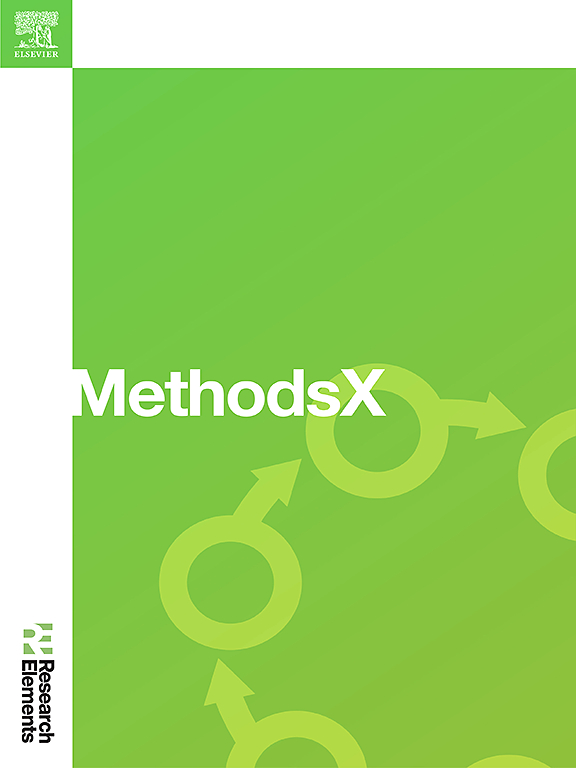促进水生模型中的微塑料摄取:将大型蚤作为特洛伊木马载体的验证方案
IF 1.6
Q2 MULTIDISCIPLINARY SCIENCES
引用次数: 0
摘要
微塑料污染因其持久性、广泛分布性和固有毒性潜力而对环境构成严重威胁。尽管该领域的出版物越来越多,但大型蚤在实验室摄入微塑料的标准化方案仍有待建立。在本研究中,我们介绍了一种经过验证的方案,旨在促进大型蚤摄取微塑料颗粒(MPs),其大小为 5-55 µm。该方案可进一步用于评估微塑料颗粒对大型蚤的毒性,大型蚤是生态毒理学中的重要生物模型。此外,该方案还可用于评估 MPs 对其他水生物种(如鱼类)的毒性,方法是将水蚤作为确保摄入这些颗粒的载体。我们确定了促进大型蚤摄取微塑料的最佳条件。本文章由计算机程序翻译,如有差异,请以英文原文为准。

Facilitating microplastic ingestion in aquatic models: A verified protocol for daphnia magna as a trojan horse vector
Microplastic pollution poses a significant environmental threat due to its persistence, widespread distribution, and inherent toxic potential. Despite the increasing number of publications in this field, a standardized protocol for the laboratory intake of microplastics by Daphnia magna has yet to be established. In this study, we introduce a verified protocol designed to facilitate the ingestion of microplastic particles (MPs) by D. magna, ranging in size from 5–55 µm. This protocol can be further applied to evaluate the toxicity of MPs on D. magna, a crucial organism model in ecotoxicology. Furthermore, this protocol can be used to assess toxicity of MPs in other aquatic species, such as fish, by using daphnids as a vehicle for ensuring the ingestion of these particles. Consequently, this protocol can be applied to study also one of the most pressing concerns regarding exposure to MPs, the transfer of MPs through different trophic levels, which has a great potential for ecotoxicological studies.
- •The influence of MPs concentration, duration and exposure dynamics and D. magna age/size in MPs intake were tested.
- •We have determined the optimal conditions for promoting microplastic ingestion by D. magna.
求助全文
通过发布文献求助,成功后即可免费获取论文全文。
去求助
来源期刊

MethodsX
Health Professions-Medical Laboratory Technology
CiteScore
3.60
自引率
5.30%
发文量
314
审稿时长
7 weeks
期刊介绍:
 求助内容:
求助内容: 应助结果提醒方式:
应助结果提醒方式:


